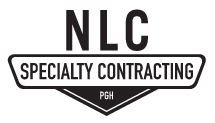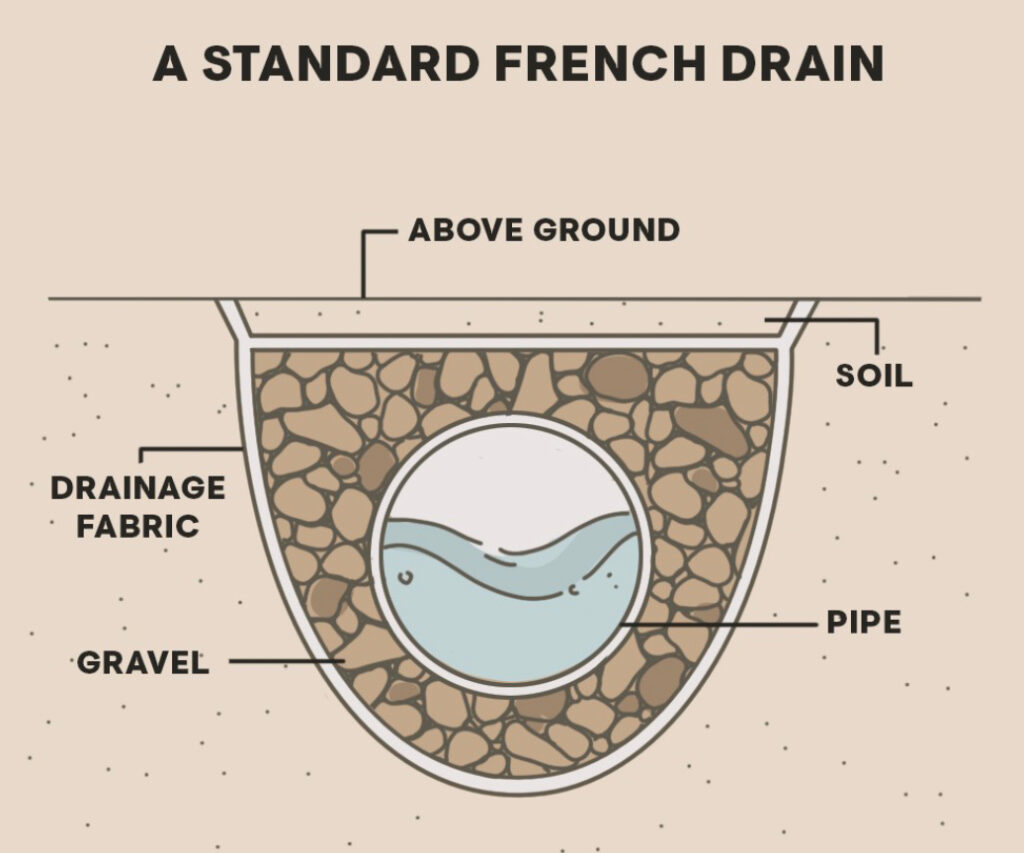If you’ve ever dealt with soggy patches in your yard or noticed water creeping toward your foundation after a heavy rain, you’re likely familiar with the frustration of water management. One highly effective solution to these problems is the installation of a French drain. While the concept may sound simple, French drains require proper planning and installation to provide lasting results.
In this post, we’ll cover what French drains are, why they’re beneficial, and how to install them correctly to avoid future headaches.
What is a French Drain?
A French drain is essentially a trench filled with gravel or rock and containing a perforated pipe that redirects water away from problematic areas, such as wet spots in your yard or near your foundation. French drains are commonly used to improve yard drainage, prevent basement flooding, and reduce water runoff on your property.
While they’re an effective and relatively low-maintenance solution, they require careful planning and correct installation to achieve the best results. Let’s take a look at some key considerations when installing a French drain.
Why Install a French Drain?
Prevent Water Damage to Foundations
Water pooling near your foundation can infiltrate your home’s walls, leading to mold, mildew, or even structural damage. A French drain can help direct this water away from your home, preventing costly damage and safeguarding your property’s integrity.
Protect Against Slips and Falls
Wet spots in your yard can also be a slip hazard, especially around driveways, walkways, or near stairways. Installing a French drain helps manage runoff water, reducing these risks and keeping your property safer for you and your guests.
Create Healthier Lawn and Garden Conditions
Excessive moisture can suffocate grass roots and cause waterlogged garden beds. By channeling excess water into a French drain, you give your plants the proper balance of water and air they need to thrive.
Key Factors to Ensure Effective Drainage
Proper Installation
One of the most important factors to ensure a French drain performs well is proper installation. This involves digging the right-size trench, selecting the right materials, and ensuring that the drainage system has the proper slope (or “fall”) for water to flow towards the exit point. If a French drain isn’t installed with the right slope, water won’t flow as it should, rendering the system ineffective.
Choosing the Right Materials
Clean Stone: Use clean, rounded stone, such as #2 river stone or #57 limestone (also known as 2b). These stones allow water to flow freely around the perforated pipe, preventing clogs.
Filter Fabric: It’s essential to place a filter fabric between the stone and the surrounding soil. This fabric acts as a barrier, preventing fine particles and sediment from the soil from clogging the drain. The fabric should also wrap around the entire trench to keep the stone and soil separate, ensuring proper water infiltration and long-term performance.
Water Disposal Considerations
You also need to think about where the water will go once it’s directed away from your foundation or yard. There are several options:
Daylighting: This means allowing the water to flow into an open area, like a ditch or garden bed, where it can safely soak into the ground.
Sump Pit: For properties where daylighting isn’t feasible, water can be routed into a sump pit, where it can then be pumped away from the home.
Rain Leader Connection: In some cases, it might make sense to tie the French drain into an existing rain leader or downspout system to carry water to a more distant location.
Regardless of the disposal method, make sure the water exits at a point far enough from your foundation to avoid creating new drainage issues.
Surface Treatment
While it’s ideal to bring the stone to the surface wherever possible to ensure maximum infiltration, this isn’t always feasible due to aesthetic concerns or the desire to have grass grow over the area. In these cases, you can cover the stone with a few inches of soil, but be sure to maintain proper drainage functionality. Always install a filter fabric to prevent soil from mixing with the stone and clogging the system.
The Bottom Line
French drains can be a lifesaver when it comes to managing water on your property. When installed correctly, they can protect your foundation, keep your yard dry, and reduce safety risks due to standing water. The key to a successful installation lies in choosing the right materials, ensuring proper slope, and making sure the drainage system has an effective water disposal plan.
If you’re unsure about tackling a French drain installation on your own, it’s worth consulting with a professional who can help design and install a system that will meet your specific needs.
If you have questions about installing a French Drain on your property contact Jim Niggel at (412) 855-0622
By following best practices and thinking through the details, you’ll ensure that your French drain continues to work effectively for years to come.

